Northern India Trip 2016. Part 1 Delhi to Binsar
You never know what’s going to appear in front of your bird hide in India……
Steve Race and I have just come back from a fabulous trip to Northern India. We were checking out locations, wildlife and logistics for our upcoming group trip in early March 2017 organised in partnership with Indus Experiences. Here is part one of the story, a selection of our best experiences, and our images.
We flew into Delhi, the bustling cultural centre of India. Despite its reputation for air-borne pollution what you don’t often hear about are the beautiful green lungs of the city; the parks are full of birds. From majestic Black Kites soaring above temples to tame White-throated Kingfishers sitting above young couples on park benches; sacred places where history, nature and love come together.
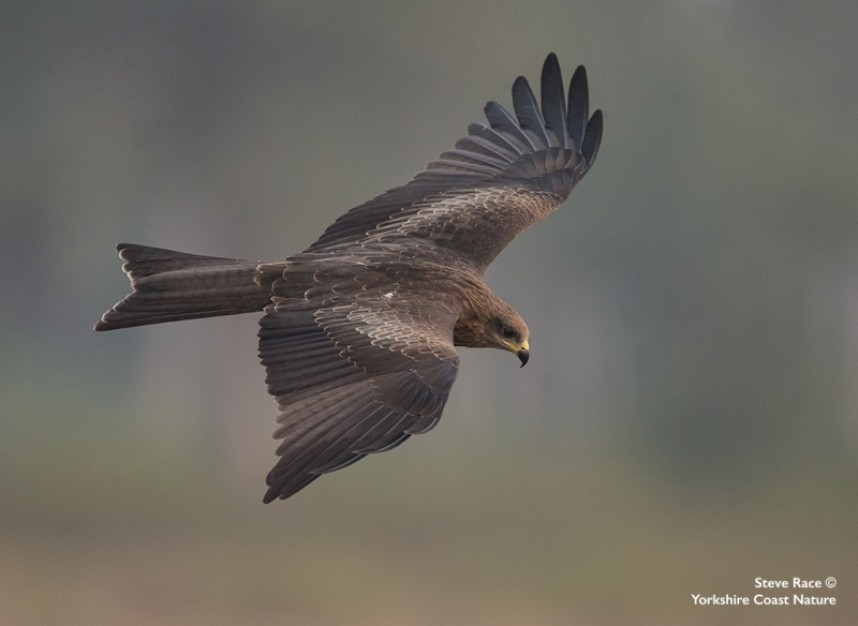
Black Kite © Steve Race
Heading north into Uttarakhand province and the foothills of the Himalayas, Pangot is a small village surrounded by forest above the lakeside town of Nainital. In winter local birds are joined by many other species moving to lower altitudes away from the colder conditions further north. Two species of Jay are found here. The stunning Black-headed Jay and the very different Eurasian Jay; sub-species bispecularis, a gorgeous but shy bird. A roaming flock of White-throated Laughing Thrushes kept us entertained as they chattered, fed and preened each other in front of the forest hide. This must be one of the easiest to see of all Laughing thrushes, normally a difficult family to see well.
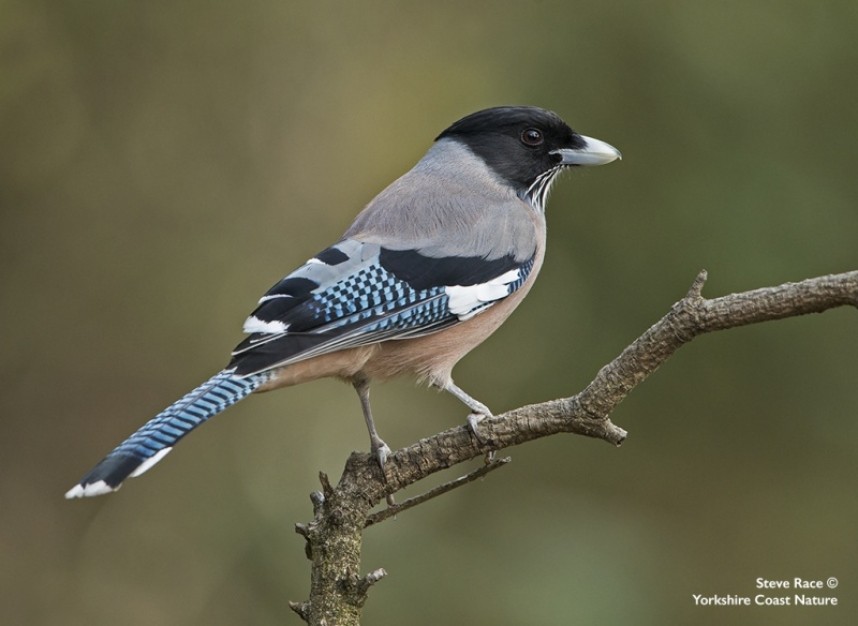
Black-headed Jay © Steve Race
In dry weather, water bathing pools provided by the local birders provide great benefit to many birds. One of the most exciting moments here for me were the amazing views we had of a Buff-barred Warbler. This, like many other ‘leaf warblers’ in South East Asia, is usually a tough species to get close to as they spend much of their time in high canopy. Other birds we saw here included lovely views of Grey-winged Blackbird and Kalij Pheasant. On the cute songbird score, however Black-throated Tit must be close to a 10!
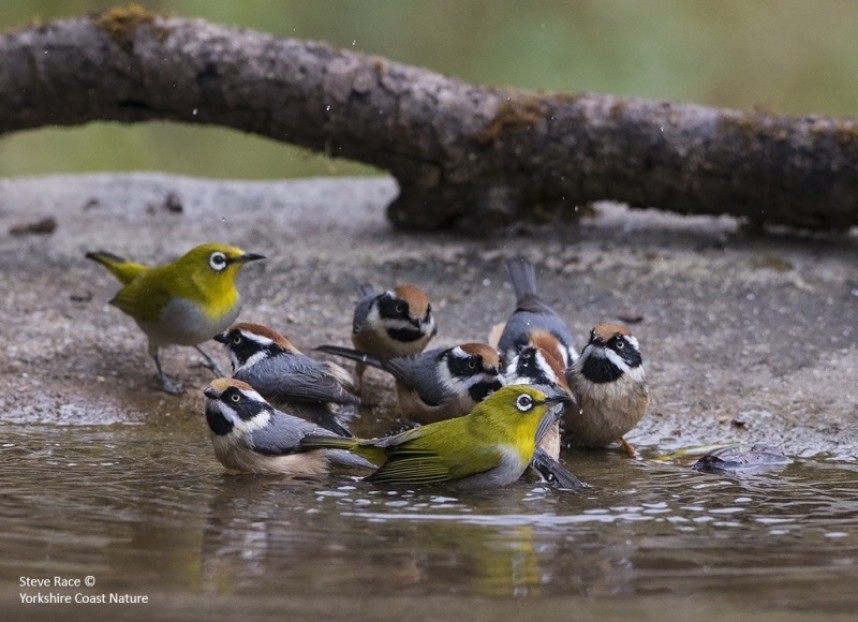
Black-throated Tits and Oriental White-eye © Steve Race
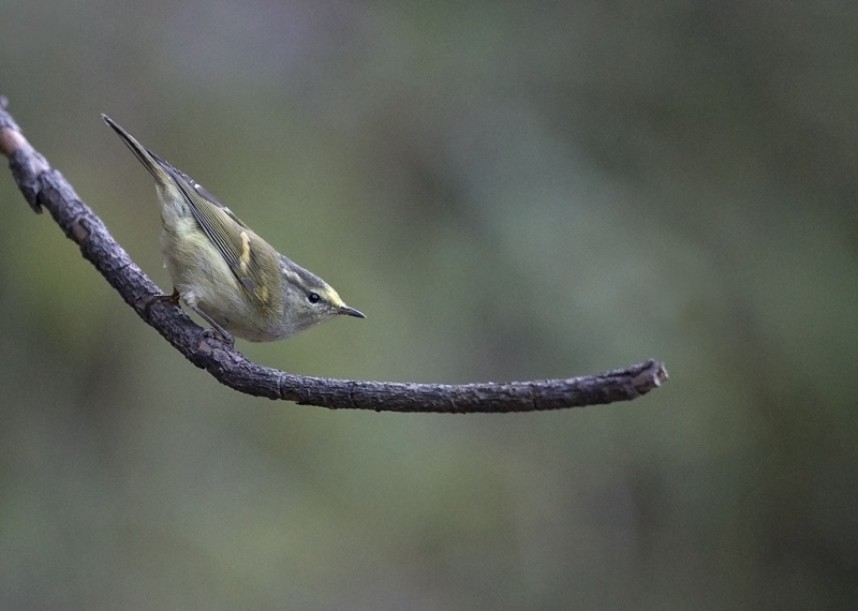
Buff-barred Warbler © Steve Race
Water also attracts mammals. So there we were, Steve and I alone in a small hide covered in a tarpaulin, discussing what we would do if a Leopard strolled up to us, when suddenly a large mammal moved through the grass! I don’t know if we were relieved or disappointed when a sweet looking Barking Deer peered at us from only a few feet away.
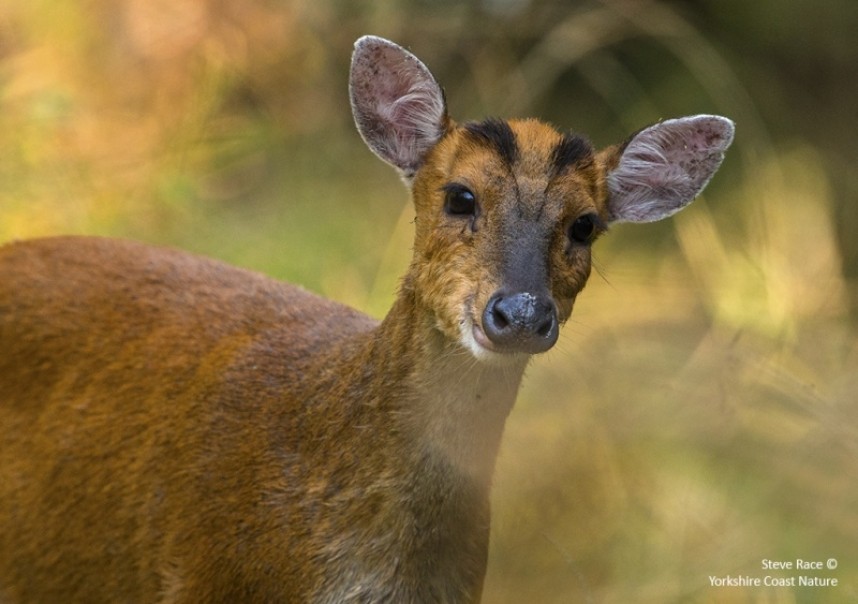
Barking Deer © Steve Race
Binsar National Park is situated in a large area of Pine, Oak and Rhododendron forest with stunning views of India’s second highest mountain, the glorious snow-capped Nanda Devi. This area felt more remote, wild and exciting. Extensive views across the valleys below greeted us from our balcony at dawn along with the sound of birds and chanting by the lone monk near the small temple below us.
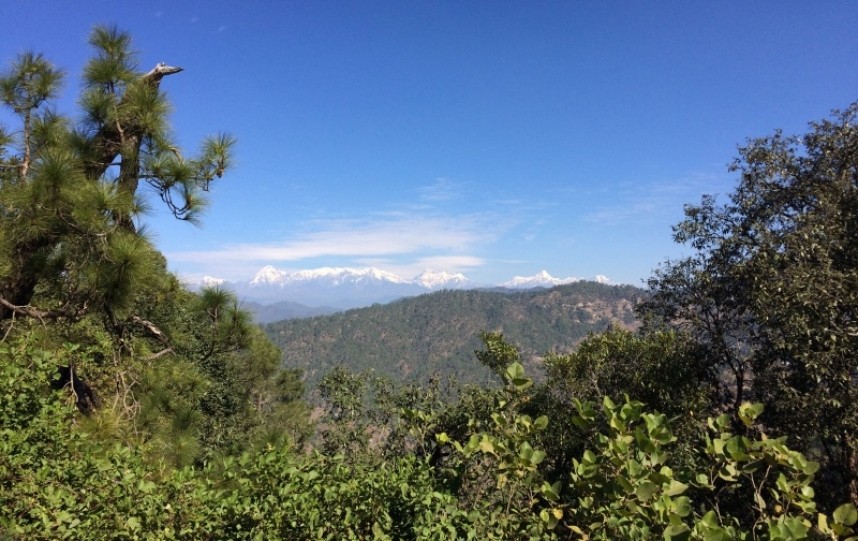
View from near Binsar © Richard Baines
Migration was in full swing and we were really reaping the rewards with some great birds close to where we stayed at the Grand Oak Manor. Pink-browed Rosefinch, Dark-breasted Rosefinch, Common Rosefinch, Pine Bunting, Black-faced Bunting, Rock Buntings, Ashy-throated Warbler, Lemon-rumped Warbler, Black-faced Warbler, Blue-capped Redstart, Blue-fronted Redstart, Black-throated Thrushes and an evening roost of an amazing 50 Rufous-breasted Accentors!
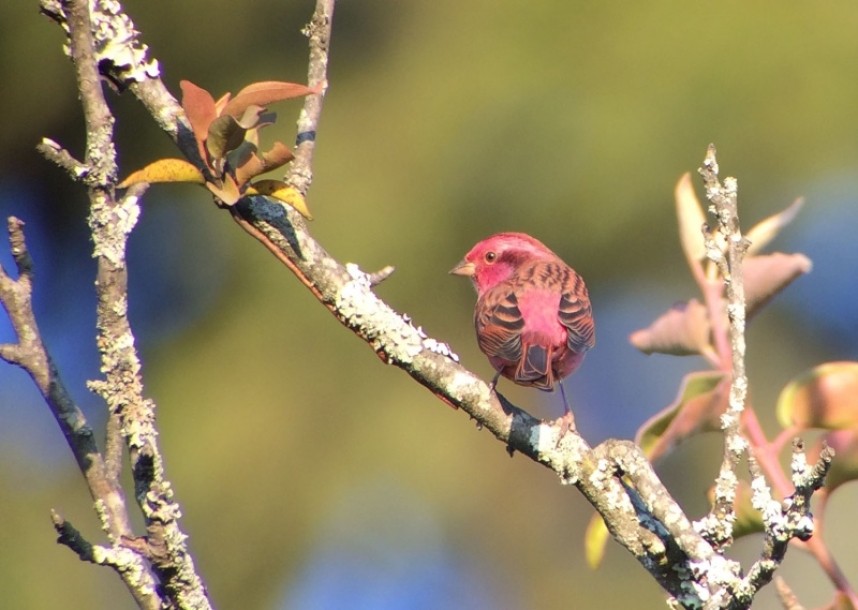
Pink-browed Rosefinch © Richard Baines
Raptors gently drifted above the trees giving fantastic views. An Oriental Honey Buzzard was too busy searching for wasp nests to be bothered about us and a Mountain Hawk Eagle roosted in a tree close to our watch point.
One of our favourite mammals on this trip was the Northern Langur. This large monkey was really impressive but relatively shy and well hidden in the large forests of Binsar. But when we did find the troop we were in for a treat as about 40 individuals crashed through the trees. Mothers and babies first, followed by the slower moving larger males keeping a keen eye on us at the back. They never travel that far though, and we were able to spend a considerable time watching and photographing them in their wild forest home.
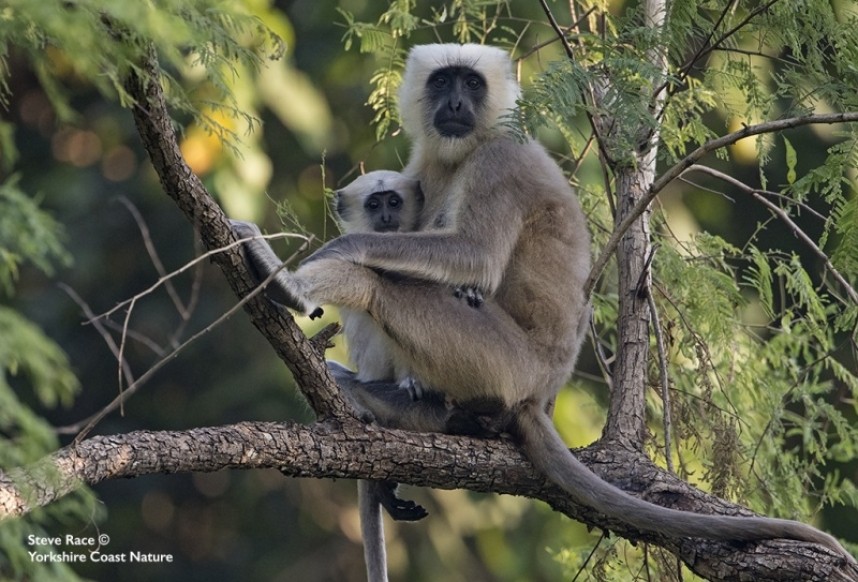
Northern Langur © Steve Race
Binsar is also a great place to see Leopards but as we were already having a great time we decided to settle for just the poo this time!
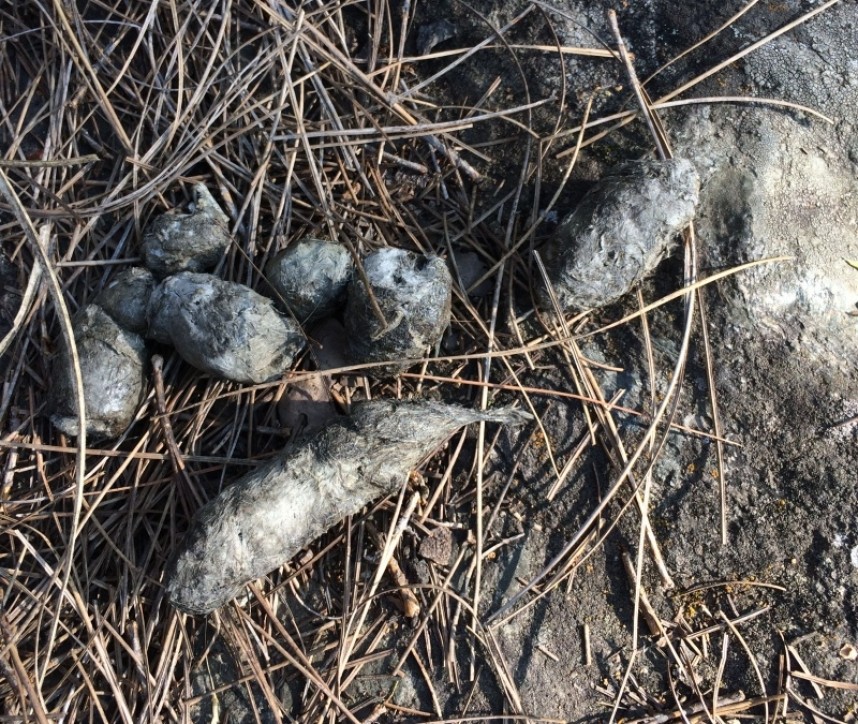
Leopard Scat © Richard Baines
Richard Baines
YCN



 Back to Blog
Back to Blog
